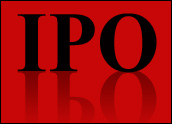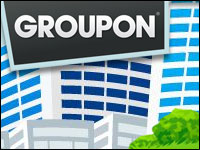
If your company has decided that the time is right for an initial public offering (IPO), it should consider the options available to it. There are ways by which a company can become publicly traded without the lengthy and costly process that usually accompanies an IPO.
A common alternative to an IPO is a reverse merger, sometimes referred to as a “reverse IPO.” This can be a quick and relatively inexpensive process if done carefully, with the full guidance of securities attorneys and CPAs trained in the IPO process.
What Is a Reverse Merger?
The most common type of reverse merger is one in which a profitable company wanting to go public acquires an inactive, publicly traded company that has no assets and no liabilities (a so-called shell company). The publicly traded company should be current with all of its filings with the SEC and should have no hidden and/or contingent liabilities.
Often, the stock of such a publicly traded shell company is listed at one US cent a share, or even less. The stockholders of such a public company have decided to continue reporting to the SEC because they realize that although the company has no income and operations, it still has value as a publicly traded shell company. This value exists because there are privately held companies that are profitable and want to become public in the most cost-effective and efficient process.
Here Is How a Reverse Merger Is Executed
The operating company — the company that is up and going, and profitable — makes an offer to exchange all of its shares for most of the shares of the publicly traded company. By so doing, the operating company’s shares are now publicly traded. The former stockholders of the shell corporation now have a vastly reduced interest in the surviving corporation, but that reduced interest is worth far more than their former interest in the shell corporation’s stock.
For example, let’s say that the operating corporation, which is privately held, has 1,000,000 shares and the shell corporation, which is publicly traded at one cent per share, coincidentally has 1,000,000 shares outstanding. Let’s also say that the private corporation’s shares have a book value of $30 per share, far exceeding the one-cent per share of the shell corporation.
The private company is worth $30,000,000 (1,000,000 shares times $30 per share). The public shell company is worth $10,000 (1,000,000 shares at one cent per share). The shareholders of the privately held company might agree to let the shareholders of the public shell to retain a 2 percent interest in the newly merged company. This 2 percent amounts to $600,000 in equity if you multiply it by the value of the private company, $30,000,000.
The shareholders of the former shell have nothing to complain about in that their shares are now worth substantially more than they were before the merger. The shareholders of the operating company are happy because the merger cost them, in effect, $600,000 and their private company is now public. A full-blown IPO might cost considerably more than the $600,000, plus might take substantially more time to effectuate.
Additionally, for the former privately held company, just the very act of being a public operating company can add considerable value to the company’s stock. As a private company, the stock had a book value of $30 per share. As a public company it could conceivable be worth twice that amount if the public perceives that the surviving company (the operating company) has good prospects.
Price-Earnings Ratio Directly Impacts the Value of a Company’s Shares
The price-earnings ratio (P/R) means that a company is valued at a multiple of its annual earnings. So, for example, if a company has annual earnings of $2 per share and a P/R of 20, its per-share value is $40.
The interesting part of this fact is the phenomenon that once a company is public, its value usually soars above its private value. The P/E ratio is normally industry specific. That is, some industries have quite high P/E ratios compared to others. Additionally, in the vast majority of cases, a publicly traded company is worth far more than a private company — all as a result of the P/E phenomenon.
Caveats to a Reverse Merger
Some people are leery of the reverse merger process. They are especially concerned about contingent liabilities that might crop up later to negatively affect the newly merged company. There is no doubt that, in some cases, this is sometimes the case.
Also, some advisers are concerned that the former owners of the shell stock will “dump” their shares once the shell company is totally merged with the operating company. This dumping can have a negative, but usually short-term, impact on the stock price of the surviving company. My experience has been that the shareholders of the former shell have had their interest so vastly reduced — say, for example, form 100 percent to 6 percent — that any dumping generally has a minimal and short-term impact on the surviving company’s share price.
Should Your Company Go Public Through the Reverse Merger Process?
The simple answer to this is “maybe.” It really all depends on the quality of your professional advisers — attorneys, accountants and investment bankers — and the goals of your company. A reverse merger can very well turn out to be a seamless way by which to quickly and inexpensively bring your company public and increase its aggregate value substantially.
On the other hand, if this process is entered into rashly and with poor professional advise, it may very well not have the outcome that you anticipated.
The choice is up to you.
Good luck!





















































Social Media
See all Social Media